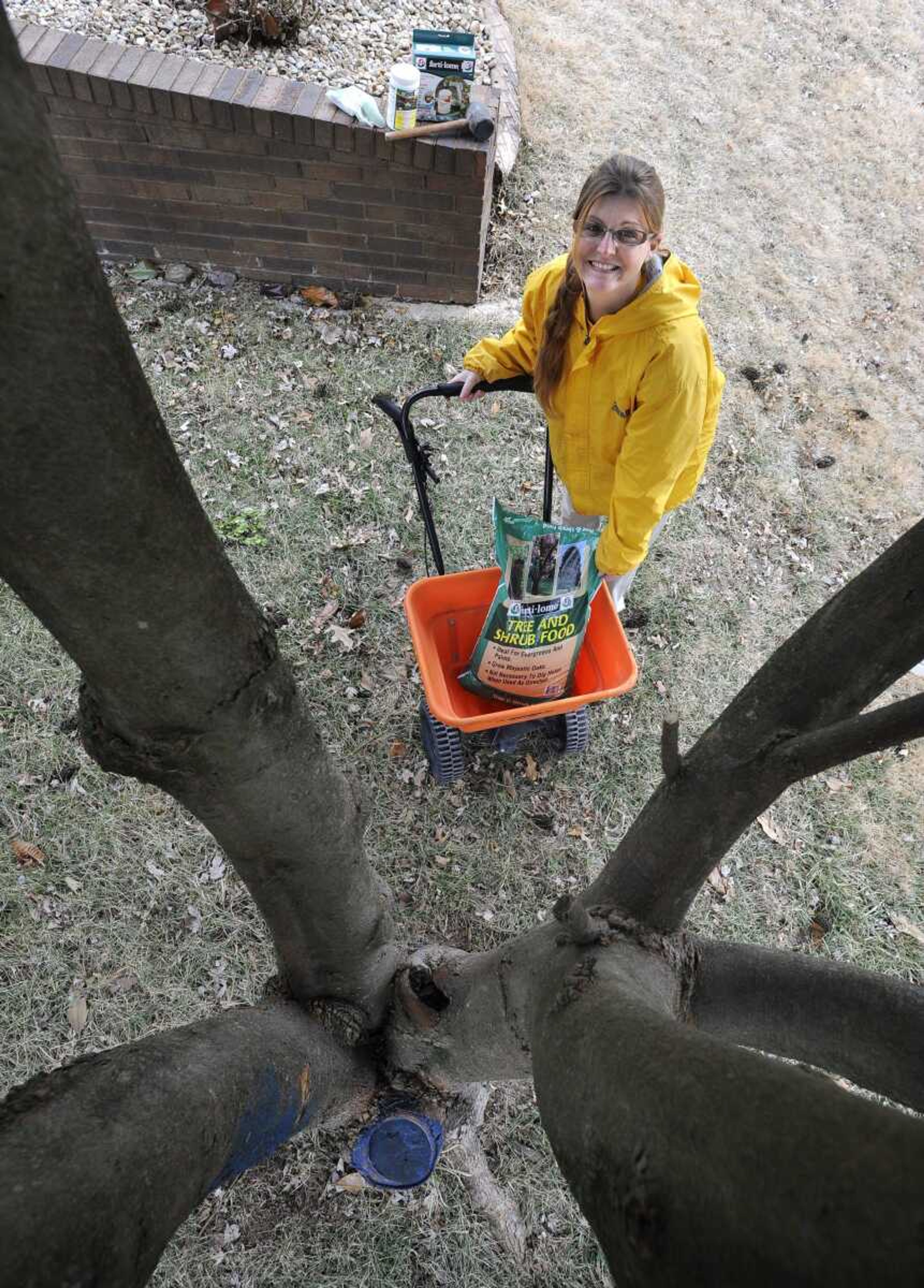I know it is early February, but I am thinking spring.
Who would have thought that a gardener was thinking spring in the winter?
I was recently talking with Dr. Mike Aide, professor of soils at Southeast Missouri State University, about fertilizers. During the discussion it dawned on me that most of the time we talk about fertilizing roses, lawns, corn and beans, but we fail to think about fertilizing established trees and shrubs. I'm not sure why that is. Trees and shrubs need a little love, too.
There are a lot of fertilizers suitable for trees and shrubs on the market. I would use one similar to 19-8-10. This combination and ratio of nitrogen, phosphorous and potassium will encourage your trees and shrubs to grow lots of shoots and leaves, along with a balanced root system. This is important because leaves are the energy converters for plants. They convert solar energy to sugars, the energy source for plant growth. The more leaves your plant has, the more sugars it will produce, and the more vigorous it will be. A vigorously growing plant will be better able to ward off diseases and insects that may attack.
Because most trees and shrubs put on one flush of growth in the spring, it is important to have fertilizer available to them to support this flush of growth. (Some species/varieties put on more than one flush of growth per season, but their major flush is in the spring.) With that in mind, I would suggest that you apply fertilizer in March or early April.
There are many methods for fertilizer applications. You can purchase fertilizer spikes and pound them into the ground around the drip line. When you use this method, you will find a tuft of grass growing faster and greener than surrounding turf. These tufts suggest to me that fertilizer is applied in areas just around the spike. The roots growing between these spots are probably not absorbing much fertilizer.
Some fertilizers are soluble in water, so you mix them up and apply the fertilizer through a hose end sprayer. This method works well if your trees and shrubs are close to a hose spigot. The down side to this method is having a long enough hose and manipulating the hose all around your yard.
The method I like best is making an application of granular fertilizer through a lawn spreader. Apply the fertilizer around the drip line and between the drip line and the stem of the tree or shrub. This method ensures that fertilizer is placed near all of the roots of the tree or shrub.
If you want to get yourself in the mood for spring, get some tree and shrub fertilizer at your local garden center and apply it to your favorite landscape plants sometime this month or in March. They will love you for it.
Send your gardening and landscape questions to Paul Schnare at P.O. Box 699, Cape Girardeau, MO 63702-0699 or by e-mail to news@semissourian.com.
Connect with the Southeast Missourian Newsroom:
For corrections to this story or other insights for the editor, click here. To submit a letter to the editor, click here. To learn about the Southeast Missourian’s AI Policy, click here.










